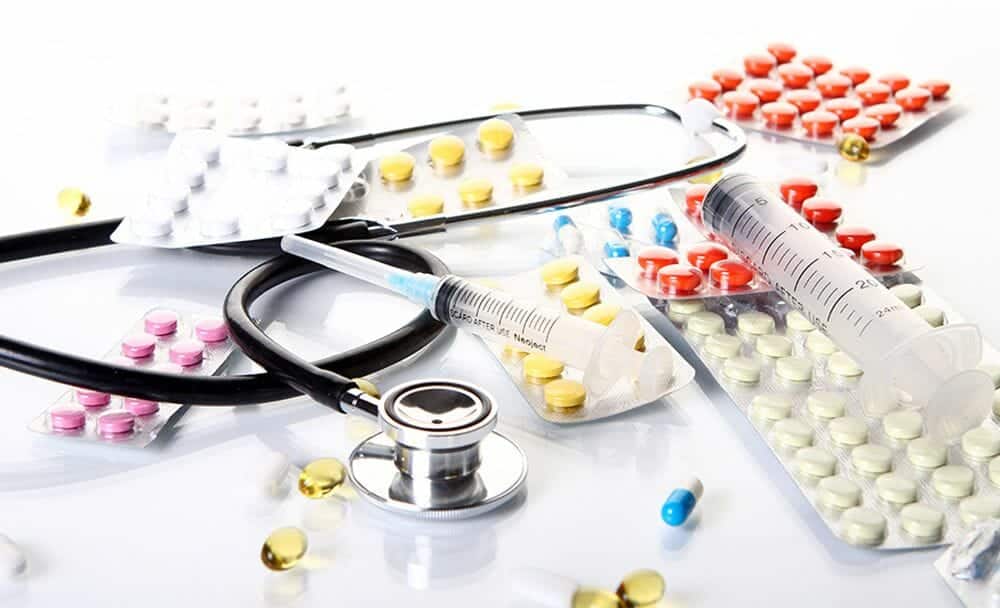
Pulmonary hypertension is a complex condition that affects the pulmonary arteries, the blood vessels transporting blood from the heart to the lungs. In individuals with Pulmonary hypertension, the pulmonary arteries become narrowed and constricted, leading to increased pressure within these vessels. Over time, this can strain the right side of the heart, leading to heart failure and other serious complications. The causes of hypertension are myriad, and according to Ayurveda, it includes Dosha Vriddhi, Dhatu Dushti, and Strotas. [2] This can affect people of all ages, and while there is no cure, advancements in research and medical treatment have significantly improved the management and quality of life for those living with this condition. [1] In this comprehensive article, we will delve into the symptoms, causes, diagnosis, and treatment of pulmonary hypertension.
Symptoms of pulmonary hypertension
Pulmonary hypertension symptoms can widely vary depending on the severity and complexity of the condition and how quickly it develops. In the early stages, individuals may experience mild and nonspecific symptoms, making diagnosis challenging. As the issue complicates, the symptoms of the disease become more pronounced, unbearable and debilitating. Common symptoms of pulmonary hypertension include:
- Shortness of breath
- Fatigue
- Chest pain
- Dizziness and fainting
- Swelling in the ankles, legs, and abdomen
- Rapid or irregular heartbeat
- Bluish lips and skin
- Wheezing and coughing [3]
Causes of pulmonary hypertension
Several factors and conditions can contribute to the development of hypertension, including:
- Smoking
- Being overweight or obese
- Lack of physical activity
- Excessive salt intake
- Alcohol consumption
- Stress
- A family history of high blood pressure
Ayurveda also provides insight into hypertension, where Vata is considered the regulator and stimulator of the mind (Mana). From an Ayurvedic perspective, its signs and symptoms can be understood in terms of Dosha (biological energies), Dushya (tissues), and Strotasa (channels). From this perspective, vitiated Vata Dosha is seen as the main cause of the disease, as Vayu itself governs the movement of Rasa (nutrient plasma) in the body.
Pitta and Kapha Doshas complement the effect of vitiated Vata and support the progression of the disease, with Rasa and Rakta (whole blood) being the main mediators of vitiation. This suggests the involvement of Tridosha (Vata, Pitta, and Kapha) in hypertension.
Previous research suggests that hypertension is essentially a ‘Vata Pradhan Tridoshaja Vyadhi,’ highly influenced by the mind (Mana). Therefore, it may be considered a disorder affecting both the body (Sharir) and the mind (Manas), referred to as Ubhayashrita Vyadhi, according to Ayurvedic principles. Acharya Charaka has designated the body (Sharir) and mind (Satva/Mana) as the abodes of diseases (Vyadhi). [2]
Diagnosis of pulmonary hypertension
Diagnosing Pulmonary hypertension involves a comprehensive evaluation of a patient’s medical history, symptoms, and physical examination, along with various diagnostic tests. Early detection is crucial to begin treatment promptly and prevent further complications. The following are some of the key diagnostic tools used to diagnose PH:
Echocardiogram:

This non-invasive test uses sound waves to generate images of the heart and its structures. It is often the initial test used to detect signs of Pulmonary hypertension and assess the heart’s function.
Right Heart Catheterization:
This is considered the gold standard for diagnosing PH. A slender and flexible catheter is inserted into the pulmonary artery to track the blood pressure and assess the severity of Pulmonary hypertension.
Chest Radiography:
Radiography images can reveal enlargement of the right side of the heart and the presence of other lung or heart conditions.
Pulmonary Function Tests (PFTs):
These tests assess lung function and can help determine if any underlying lung disease contributes to PH.
Laboratory Tests:
Blood tests can check for various markers associated with PH, such as B-type natriuretic peptide (BNP) and other inflammatory markers.
Ventilation/Perfusion (V/Q) Scan:
This imaging test helps detect chronic blood clots in the lungs and is among the potential Pulmonary hypertension causes.
Computed Tomography (CT) or Magnetic Resonance Imaging (MRI):
These imaging techniques can provide detailed images of the heart and lungs, helping to identify structural abnormalities or other causes of Pulmonary hypertension. [3]
Treatment of pulmonary hypertension
Pulmonary hypertension treatment aims to relieve symptoms, slow down disease progression, and improve the patient’s quality of life. The specific treatment approach depends on the underlying cause and the severity of the condition. The following are some of the common treatment options:
Panchakarma:
Abhyanga (Massage)
a- Vaman and Virechan (Emesis and purgative therapy) – These are purification procedures that are recommended on the basis of the predominant vata dosha and good strength (Uttam Bala).
b- Basti (Medicated enema): Basti therapy is specifically designed for Vata disorders. [2]
Dietary modification:
Reduce sodium intake, particularly from table salt, opt for a high-potassium diet, and restore a proper sodium/potassium balance. Make dietary changes such as consuming a diet rich in fruits, vegetables, whole grains, and low-fat dairy products, while reducing the intake of refined sugar and heavily processed foods, limiting caffeine consumption, and moderating alcohol intake. [2]
Weight loss and physical activity:
Regular aerobic exercises such as brisk walking, jogging, and running can help improve the condition. [2]
Medications:

Various medications are used to manage different types of PH. Drugs like endothelin receptor antagonists, prostacyclin analogs, and phosphodiesterase-5 inhibitors help dilate the pulmonary arteries and reduce pressure. [3]
Oxygen Therapy:
Supplemental oxygen can be provided to improve oxygen levels in the blood. [3]
Lung Transplantation:
For severe cases of PH that do not respond to medical treatment, lung or heart transplantation may be considered. [3]
FAQs
What is the leading cause of pulmonary artery hypertension?
The leading cause of pulmonary arterial hypertension is believed to be a family history of blood clots as well as various lifestyle habits. Unhealthy habits like excessive smoking and illegal drug use can be a cause. Apart from this, certain medications like those that treat cancer and depression may also increase the risk. [4]
What is the pulmonary hypertension classification?
1. Pulmonary arterial hypertension
2. Pulmonary hypertension due to left heart disease
3. Pulmonary hypertension arising from lung diseases and/or hypoxia
4. Chronic thromboembolic pulmonary hypertension
5. Pulmonary hypertension with unclear multifactorial mechanisms
What is pulmonary hypertension icd 10?
The ICD-10 code I27.20, which corresponds to Pulmonary hypertension, unspecified, falls under the medical classification designated by the World Health Organization (WHO) in the range of Diseases of the circulatory system.
Conclusion
Pulmonary hypertension is a challenging condition that can significantly impact the quality of life of affected individuals. Early recognition and proper management are crucial in improving outcomes and preventing complications. A multidisciplinary approach involving pulmonologists, cardiologists, and other specialists is essential for providing comprehensive care to patients with Pulmonary hypertension. Research and ongoing clinical trials drive advancements in treatment options, offering hope for better outcomes and improved quality of life for those with this condition.
Disclaimer:
This article is written from a health and wellness perspective and is not medical advice. Kindly seek the help of a certified medical practitioner before initiating any treatment.
References:





















Some times its a pain in the ass to read what blog owners wrote but this web site is real user pleasant! .
I have not checked in here for a while because I thought it was getting boring, but the last few posts are good quality so I guess I’ll add you back to my daily bloglist. You deserve it my friend 🙂